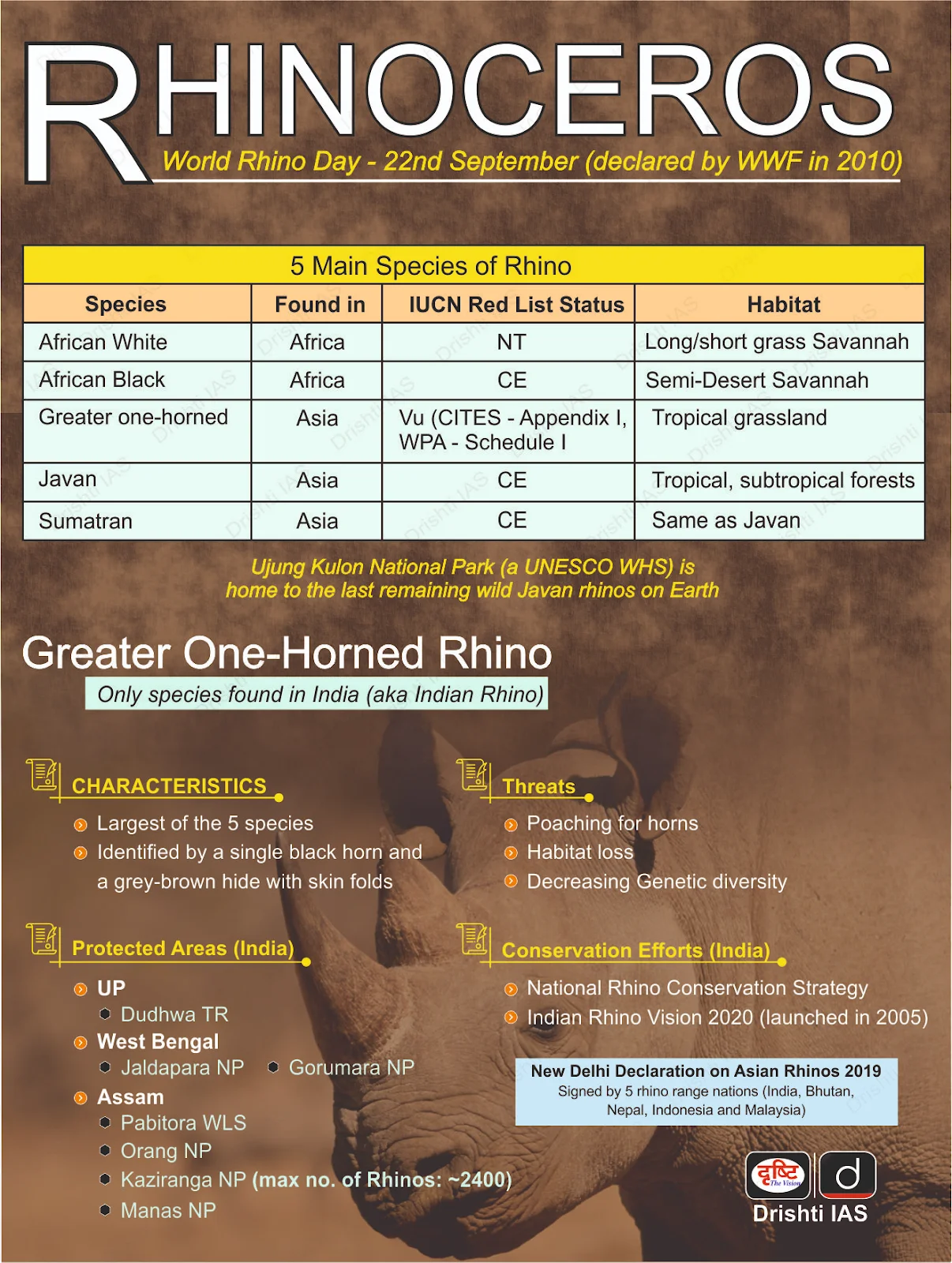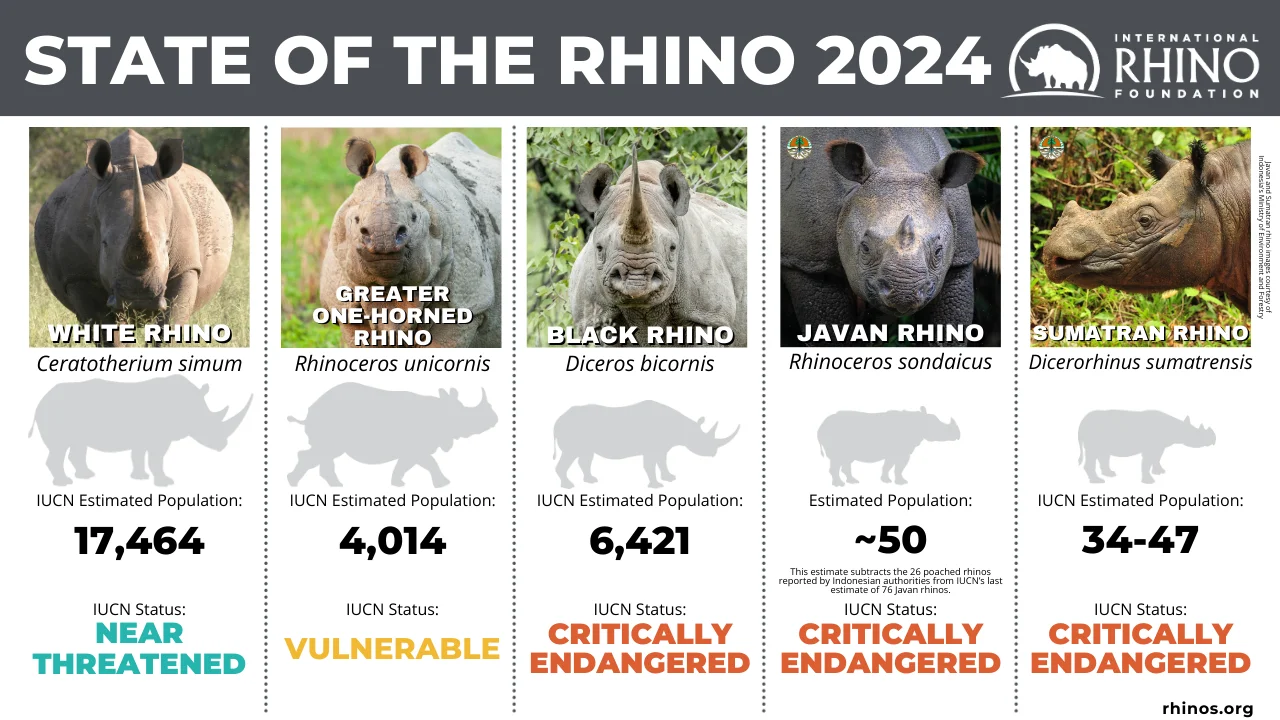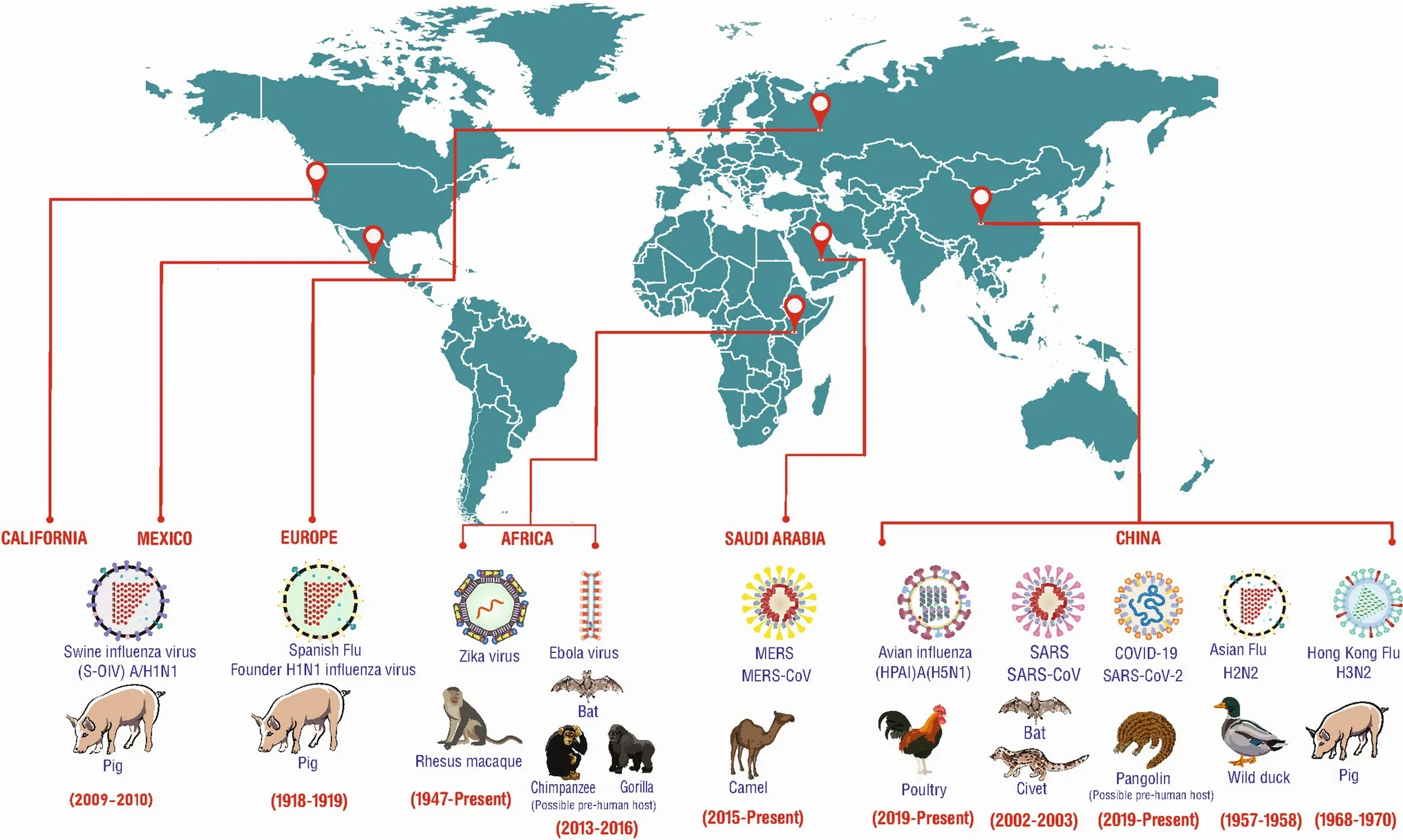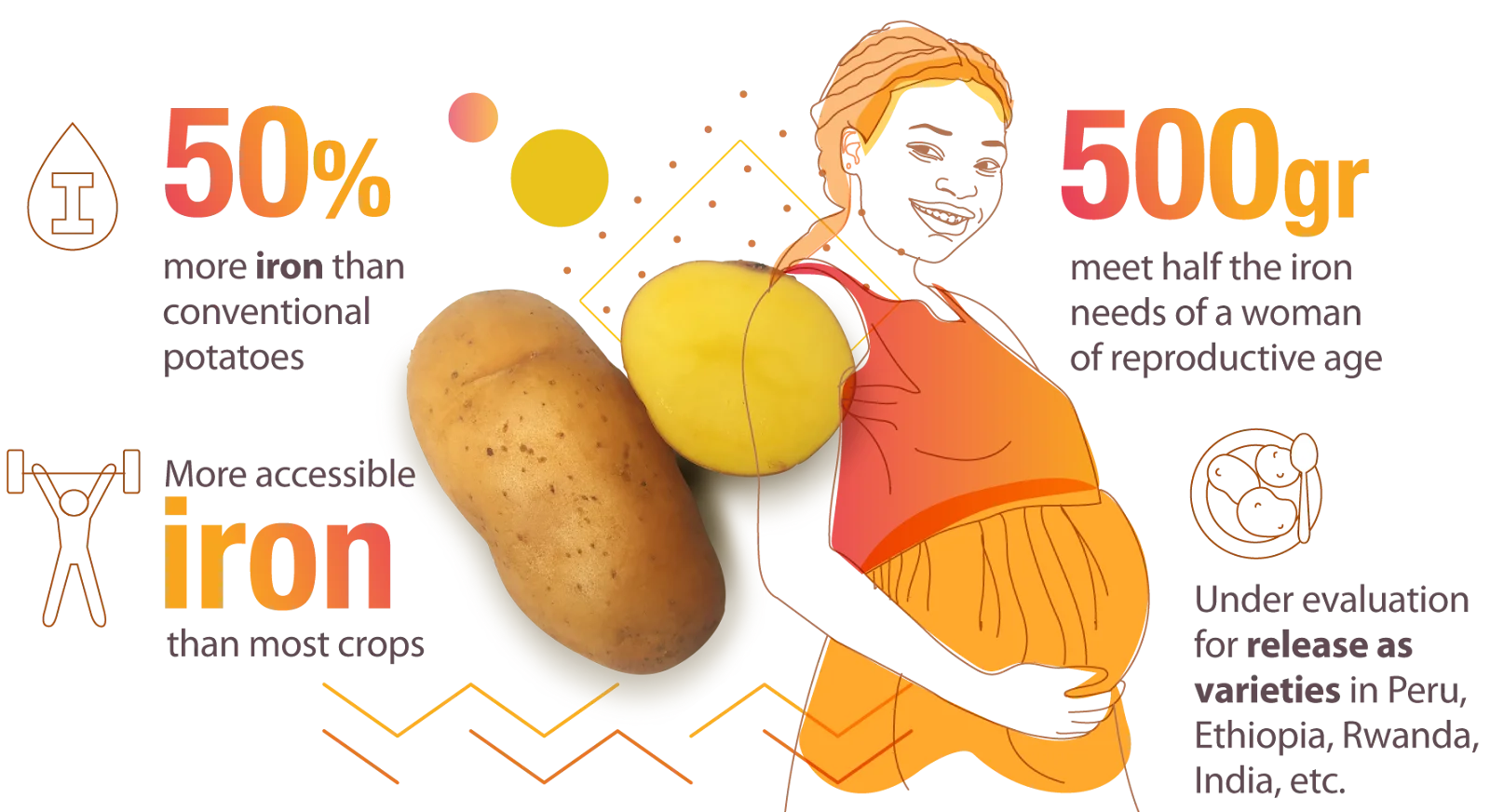ESG Oversight in India
For Prelims: Serious Fraud Investigation Office (SFIO), National Financial Reporting Authority (NFRA). Business Responsibility and Sustainability Reports, Corporate Social Responsibility
For Mains: ESG and sustainable economic growth, Greenwashing, Environmental governance challenges in India’s industrial sectors
Why in News?
A Parliamentary Standing Committee on Finance has recommended that the Ministry of Corporate Affairs (MCA) establish a dedicated ESG (Environmental, Social, and Governance) oversight body. The push comes amid rising concerns over greenwashing.
What is ESG (Environmental, Social, and Governance)?
- About: ESG refers to standards for assessing an organisation’s environmental and social impact.
- Importance of ESG for India:
- Climate: India is prone to floods, heatwaves, and sea-level rise ( according to the Centre for Science and Environment (CSE), in 2024, India experienced extreme weather events on 322 out of 366 days).
- Companies with strong environmental practices, using clean energy and cutting emissions can reduce these risks.
- Social: India faces social challenges such as poverty, inequality, and lack of basic needs.
- Companies that prioritize social responsibility can drive positive societal change, creating a more inclusive economy.
- Governance: Strong corporate governance built on transparency and ethical conduct helps rebuild trust, draw investments, and support stable, sustainable economic growth.
- Climate: India is prone to floods, heatwaves, and sea-level rise ( according to the Centre for Science and Environment (CSE), in 2024, India experienced extreme weather events on 322 out of 366 days).
- Parliamentary Standing Committee Recommendations: The committee has recommended creating an ESG oversight body within the MCA to ensure companies make genuine sustainability claims.
- This body should have forensic experts to detect fraud, set sector-specific ESG guidelines, and help Micro, Small, and Medium Enterprises (MSMEs) adopt ESG practices.
- It proposes amending the Companies Act, 2013 to make ESG a core duty of directors, embedding sustainability into business strategy with stronger rules for accurate and meaningful ESG actions.
- It also calls for stricter, faster penalties for false ESG claims to deter greenwashing.
- Additionally, the panel has urged to develop strategies for addressing financial crimes early on and strengthen the Serious Fraud Investigation Office (SFIO) and the National Financial Reporting Authority (NFRA).
- It also emphasized improving the transparency and effectiveness of the Corporate Social Responsibility (CSR) oversight system.
- India’s Initiative Related to ESG: The Securities and Exchange Board of India (SEBI) has mandated the top 1,000 listed companies to disclose their ESG performance through the Business Responsibility and Sustainability Reporting (BRSR) Framework.
- This framework aligns with global standards like the Global Reporting Initiative (GRI) and the Sustainability Accounting Standards Board (SASB).
What is Greenwashing?
- About: Greenwashing refers to the deceptive practice where companies make false or exaggerated environmental claims about their products to create a misleading impression of being environmentally friendly.
- This tactic is used to attract consumers who prefer sustainable and eco-friendly products.
- It involves false advertising, vague labels, or confusing messaging regarding product recyclability, eco-friendly materials, and sustainability practices.
- Factors Contribute to the Prevalence of Greenwashing:
- Rising Eco-Consumerism: Growing awareness about climate change and pollution, especially among younger Indians, has led to a surge in demand for sustainable products.
- To exploit this trend, some brands use vague terms like eco-friendly or natural without certification or real sustainable practices.
- Weak Regulatory Enforcement: Bureau of Indian Standards (BIS) Eco-Mark certification helps consumers identify eco-friendly products, though its adoption is not mandatory, and many products still lack this certification.
- Plastic Waste Management Rules aim to reduce plastic waste but don't fully tackle greenwashing related to plastic reduction claims.
- ESG-related requirements are spread across multiple laws and guidelines without a unified compliance framework.
- Absence of strict penalties for false ESG claims reduces deterrence against greenwashing.
- Cultural Exploitation: Some companies in India exploit traditional systems like Ayurveda or organic farming to market their products as eco-friendly.
- They use labels like "natural" or "Ayurvedic" to appeal to consumers, even when their sourcing or production methods are unsustainable and environmentally harmful.
- CSR and Marketing: Companies often highlight token CSR activities like tree planting, while continuing environmentally harmful operations, especially in sectors like fossil fuels or heavy manufacturing.
- Rising Eco-Consumerism: Growing awareness about climate change and pollution, especially among younger Indians, has led to a surge in demand for sustainable products.
- India’s Initiatives Related to Greenwashing:
- Consumer Protection Act, 2019: Central Consumer Protection Authority (CCPA) regulates misleading environmental claims.
- Green Rating Project: Under the Centre for Science and Environment (CSE), it rates industries on environmental performance.
- Advertising Standards Council of India Guidelines: Advertisements with green claims must be specific, accurate, and not misleading.
|
Drishti Mains Question: Q. Greenwashing is as much an ethical issue as it is a regulatory one.’ In this context, discuss the role of Environmental, Social, and Governance in promoting corporate sustainability. |
UPSC Civil Services Examination, Previous Year Question (PYQ)
Prelims
Q. Which one of the following best describes the term “greenwashing”?
a) Conveying a false impression that a company’s products are eco-friendly and environmentally sound
b) Non-inclusion of ecological/environmental costs in the Annual Financial Statements of a country
c) Ignoring the disastrous ecological consequences while undertaking infrastructure development
d) Making mandatory provisions for environmental costs in a government project/programme
Ans: (a)
India’s Groundwater Contamination Crisis
For Prelims: Central Ground Water Board, Pollutants in water, World Health Organization, Atal Bhujal Yojana
For Mains: Water resources management and groundwater contamination, Conservation
Why in News?
The 2024 Annual Groundwater Quality Report by the Central Ground Water Board’s (CGWB) reveals widespread contamination of India’s groundwater. With over 600 million Indians depending on groundwater daily this pollution has become a serious public health crisis, not just an environmental issue.
What are the Causes for India’s Groundwater Contamination Crisis?
- Industrial Pollution: Unregulated discharge of heavy metals (lead, cadmium, chromium, mercury) and toxic chemicals from industries pollutes groundwater.
- Areas near industrial clusters like Kanpur (Uttar Pradesh) and Vapi (Gujarat) have dangerously high groundwater toxicity, creating “death zones.” Toxic effluents have caused kidney failures.
- Overuse of Fertilizers: Excessive use of nitrogen-rich fertilizers leads to nitrate pollution. Phosphate fertilizers contribute to uranium contamination in groundwater.
- Improper Sanitation and Waste Management: Leakage from septic tanks and sewage systems contaminates groundwater with pathogens. Faulty sewage treatment plants cause localized outbreaks of waterborne diseases.
- Natural (Geogenic) Contamination: Fluoride, arsenic, and uranium naturally occur in certain geological formations, especially in states like Rajasthan, Bihar, Punjab, and West Bengal.
- Excessive pumping lowers water tables and concentrates pollutants, making aquifers more vulnerable to geogenic toxins and salinity intrusion.
- Fragmented and Weak Regulatory Framework: The Water (Prevention and Control of Pollution) Act, 1974, largely overlooks groundwater, and its enforcement on groundwater pollution is inadequate, allowing polluters to exploit loopholes.
- The CGWB lacks statutory authority, and State Pollution Control Boards (SPCBs) are under-resourced and technically constrained.
- Agencies like CGWB, CPCB, SPCBs, and the Ministry of Jal Shakti work in silos, duplicating efforts and lacking coordination for integrated action.
- Poor Monitoring and Public Awareness: Data collection is infrequent and not publicly accessible, delaying detection and response. Poor involvement of local communities and panchayats in monitoring and managing groundwater quality.
Key Bodies Involved in India’s Groundwater Management
- Central Ground Water Authority (CGWA): Although water is a state subject, groundwater regulation happens at both central and state levels.
- The CGWA, set up in 1997 under the Environment Protection Act, 1986, regulates and controls groundwater across India.
- Central Ground Water Board (CGWB): Multi-disciplinary scientific body under the Ministry of Jal Shakti. It explores and monitors groundwater resources.
- Central Water Commission (CWC): India’s premier technical body for water resources, operating under the Ministry of Jal Shakti. Headquartered in New Delhi.
- It coordinates with state governments on flood control, irrigation, navigation, drinking water, and hydropower projects.
- Central Pollution Control Board (CPCB):Implements the Water (Prevention and Control of Pollution) Act, 1974.
- It restores and maintains water quality, advises the central government on pollution prevention and control, water quality improvement, and air quality improvement.
What are the Impacts of Contaminated Groundwater?
- Health:
- Fluoride contamination: Above the World Health Organization (WHO) limit of 1.5 mg/L, causing skeletal fluorosis, joint pain, bone deformities, and stunted growth.
- It affects around 66 million people, especially in Rajasthan, Madhya Pradesh, and Uttar Pradesh.
- Arsenic poisoning: In Bihar and Uttar Pradesh, levels have reached up to 200 µg/L, linked to thousands of cancer cases. Above the WHO limit of 10 µg/L, Arsenic poisoning causes skin lesions, respiratory issues, and cancers.
- Nitrate contamination: Above the WHO safe limit of 45 mg/L, it causes “blue baby syndrome” (methemoglobinemia) in infants, with rising hospital admissions in Punjab, Haryana, and Karnataka.
- Uranium contamination: Above the WHO threshold of 30 µg/L, causing chronic organ damage and kidney toxicity.
- In Punjab’s Malwa region, 66% of samples exceed safe levels.
- Heavy metals (lead, cadmium, chromium, mercury): Elevated levels in industrial areas like Kanpur and Vapi cause developmental delays, anemia, neurological and immune damage.
- Pathogenic contamination: Sewage leaks introduce bacteria and viruses, causing cholera, dysentery, hepatitis A and E outbreaks.
- Fluoride contamination: Above the World Health Organization (WHO) limit of 1.5 mg/L, causing skeletal fluorosis, joint pain, bone deformities, and stunted growth.
- Agriculture: Contaminated groundwater reduces crop yields by introducing harmful substances like heavy metals and toxins into the food chain.
- In coastal regions, over-extraction of groundwater leads to salinity intrusion, significantly reducing agricultural productivity.
- Ecosystem Stability: Polluted groundwater harms local wildlife by contaminating water sources, disrupting habitats, and affecting biodiversity, leading to a decline in species dependent on clean water.
What Reforms are Needed to Address the Groundwater Contamination Crisis?
- National Groundwater Pollution Control Framework (NGPCF): Establish a NGPCF to define clear roles and give CGWB regulatory powers.
- Modern monitoring systems : Upgrade monitoring of ground water using real-time sensors, remote sensing, National Aquifer Mapping and Management Programme, and open data platforms. Integrate with health surveillance systems like Health Management Information System for early detection.
- Targeted Remediation: Under the Jal Jeevan Mission (JJM), expand and install community water purification plants (CWPPs) (arsenic and fluoride removal plants), and increase safe piped water coverage.
- Strict industrial & Waste Regulation: Mandate Zero Liquid Discharge (ZLD), strictly regulate landfills, and empower the CGWB to enforce penalties for illegal discharges.
- Agrochemical Reforms: Promote organic farming through schemes like Paramparagat Krishi Vikas Yojana (PKVY).
- Regulate and reduce the overuse of chemical fertilizers and pesticides to prevent nitrate and heavy metal contamination.
- Community-Centric Groundwater Governance: Empower local bodies like panchayats, water user groups, and schools to actively participate in groundwater monitoring and management.
- Programs like Atal Bhujal Yojana (ATAL JAL) promote community-led sustainable groundwater management through awareness, capacity building, and convergence of central and state efforts to ensure long-term water security.
|
Drishti Mains Question: Discuss the major causes and health consequences of groundwater contamination in India. |
UPSC Civil Services Examination, Previous Year Questions (PYQs)
Prelims:
Q. Which of the following can be found as pollutants in the drinking water in some parts of India? (2013)
- Arsenic
- Sorbitol
- Fluoride
- Formaldehyde
- Uranium
Select the correct answer using the codes given below.
a) 1 and 3 only
b) 2, 4 and 5 only
c) 1, 3 and 5 only
d) 1, 2, 3, 4 and 5
Ans: C
Mains
Q. What are the salient features of the Jal Shakti Abhiyan launched by the Government of India for water conservation and water security? (2020)
Q. The ideal solution of depleting ground water resources in India is water harvesting system”. How can it be made effective in urban areas? (2018)
Reforming India's Justice Delivery System
For Prelims: Indian judiciary, Supreme Court, e-Courts project, National Judicial Appointments Commission, Lok Adalats, FASTER , Live streaming of court proceedings, ADR mechanism, Mediation, Public Interest Litigation
For Mains: Judicial Backlog in India, Judicial Reforms in Indian Judiciary, Current Major Issues Related to Indian Judiciary, Key Initiatives Related to Judicial Reforms in India.
Why in News?
The Indian judiciary is facing a massive backlog of over 5 crore cases across the Supreme Court, High Courts, and District Courts, severely impacting the justice delivery system, effective governance, and citizen trust in the legal system.
What are the Key Statistics Related to Judicial Pendency?
|
Magnitude of Pendency |
As of mid-2025, over 5 crore cases are pending in Indian courts, with district courts handling 90% (4.6 crore+), followed by High Courts (63.3 lakh+) and the Supreme Court (86,700+) |
|
Disposal Disparities (Criminal vs Civil Cases) |
Criminal cases have faster disposal, with 85.3% of High Court cases resolved within a year.
|
What are the Key Factors Contributing to High Pendency of Cases in Indian Courts?
- Low Judge-Population Ratio: The judge-to-population ratio remains stagnant at 15 judges per 10 lakh people, far from the Law Commission's recommendation of 50.
- Although women constitute 38% of the lower judiciary, they are grossly underrepresented in high courts at just 14%
- Frequent Adjournments: Frequent adjournments in court cases directly contribute to judicial pendency, which is the accumulation of unresolved cases.
- This delay in justice delivery undermines public confidence in the legal system
- A study on delayed cases in the Delhi High Court showed that 70% of cases involved more than three adjournments.
- While procedures exist to limit adjournments, they are often granted, leading to a "tareek pe tareek (date after date)" culture.
- Underutilized ADR: ADR mechanisms like mediation, arbitration, and conciliation remain underused despite their potential to reduce backlog.
- Also, a lack of centralized, up-to-date, and granular data on the performance of all ADR mechanisms across the country makes it difficult to provide a comprehensive, national picture of their utilization and effectiveness.
- Rise in Litigation: Growing legal awareness and PILs, along with trivial/non-meritorious cases, increase filings.
- Nearly 50% of pending cases involve government departments, where delayed decisions and routine appeals worsen backlog.
- Structural & Procedural Constraints: Inadequate courtrooms, shortage of staff, poor ICT infrastructure, lack of case management systems, frequent adjournments, witness and evidence delays.
What are the Key Initiatives Related to Judicial Reforms in India?
- National Mission for Justice Delivery and Legal Reforms (2011): Aims to enhance justice access, efficiency, and accountability through reforms.
- e-Courts Project: Digitizes courts for paperless filing, virtual hearings, and faster case handling.
- National Judicial Infrastructure Authority of India: Proposed body aimed at developing and maintaining uniform judicial infrastructure across the country.
- Fast Track Special Courts: Courts dedicated to speedy trial and disposal of select case types.
- Alternative Dispute Resolution (ADR) Mechanisms: Offers mediation, arbitration, and conciliation as faster, affordable alternatives to litigation.
- Tele-Law: Connects marginalized people with remote legal advice via technology.
- Nyaya Bandhu (Pro Bono): Volunteer lawyers providing free legal aid to the needy.
- Filling Judicial Vacancies: From 2014 to 2024, 62 Supreme Court and 976 High Court judges were appointed, with 745 made permanent. High Court strength rose from 906 to 1,114, and district courts from 19,518 to 25,609, reflecting efforts to boost judicial capacity and reduce pendency.
What are the Alternative Dispute Resolution Mechanisms?Click here to Read: Alternative Dispute Resolution Mechanisms |
What Measures Should be Taken to Strengthen India’s Judicial System?
- Strengthening Judicial Capacity & Appointments: Fast-track appointments in High Courts and District Courts and raise the judge-to-population ratio to 50 per million (as recommended by 1987 Law Commission).
- Improve efficiency by reforming collegium transparency, increasing retirement age, expanding judge strength, and creating specialized courts.
- Implement the Second ARC’s proposals for a National Judicial Council enabling simplified laws, time-bound hearings, case fast-tracking, court expansion, and enhanced use of IT and training.
- Infrastructure and Technology Reforms: Establishing the National Judicial Infrastructure Authority (NJIA) will standardize court facilities.
- Expanding the e-Courts project, using tools like FASTER, and ongoing staff training will enhance digitization, virtual hearings, and case management efficiency.
- Procedural and Case Management Reforms: Limiting adjournments, promoting summary trials, pre-trial conferences, and time-bound hearings can expedite justice.
- Integrating AI tools for case clustering, listing, and tracking, with defined timelines, will enhance efficiency and transparency in the judiciary.
- Promoting ADR and Legal Access: Expanding ADR mechanisms like mediation, arbitration, and conciliation can help reduce court burden.
- Effective implementation of the Mediation Act, 2023, and scaling up Lok Adalats, which settled 27.5 crore cases (2021–2025), highlight the potential of out-of-court resolution.
- Strengthening legal aid through Tele-Law, mobile clinics, and wider NALSA outreach will improve access to justice for the underserved
Conclusion:
The Indian judiciary stands at a critical juncture, where reforms must translate into results. Justice delayed continues to erode public trust and constitutional values. Bridging the gap between caseload and capacity, strengthening ADR mechanisms, and modernising infrastructure and processes are not mere policy choices but constitutional obligations to uphold the rule of law and ensure timely, accessible justice.
|
Drishti Mains Question: Judicial pendency is a symptom of a deeper malaise in India's legal system. Critically analyze the structural and procedural constraints contributing to the high backlog of cases and suggest comprehensive reforms to address this challenge |
UPSC Civil Services Examination, Previous Year Question (PYQ)
Prelims
Q. Consider the following statements: (2019)
- The 44th Amendment to the Constitution of India introduced an Article placing the election of the Prime Minister beyond judicial review.
- The Supreme Court of India struck down the 99th Amendment to the Constitution of India as being violative of the independence of judiciary.
Which of the statements given above is/are correct?
(a) 1 only
(b) 2 only
(c) Both 1 and 2
(d) Neither 1 nor 2
Ans: (b)
Q. With reference to National Legal Services Authority, consider the following statements: (2013)
- Its objective is to provide free and competent legal services to the weaker sections of the society on the basis of equal opportunity.
- It issues guidelines for the State Legal Services Authorities to implement the legal programmes and schemes throughout the country.
Which of the statements given above is/are correct?
(a) 1 only
(b) 2 only
(c) Both 1 and 2
(d) Neither 1 nor 2
Ans: (c)
Mains
Q. Critically examine the Supreme Court’s judgment on ‘National Judicial Appointments Commission Act, 2014’ with reference to the appointment of judges of higher judiciary in India. (2017)
Q. Who are entitled to receive free legal aid? Assess the role of the National Legal Services Authority(NALSA) in rendering free legal aid in India (2023)
World Lion Day 2025
Why in News?
The Ministry of Environment, Forest and Climate Change celebrated World Lion Day 2025 at Barda Wildlife Sanctuary, Gujarat.
Note: World Lion Day (10th August) is an initiative started in 2013 by Big Cat Rescue (world’s largest accredited sanctuary dedicated to big cats) to raise awareness about the rapidly declining lion population and the urgent need for their conservation.
- Lions (Panthera leo) are the most social big cats, found mainly in sub-Saharan and west Africa, with a small Asiatic population in India’s Gir National Park.
What are the Key Facts About Asiatic Lions?
- About: The Asiatic lion (Panthera leo persica) is a slightly smaller than African lion.
- A unique feature of Asiatic lions is a longitudinal fold of skin along their belly, rarely seen in African lions.
- Unlike African males, Asiatic males have a less prominent mane, leaving their ears always visible.
- Habitat: Grasslands, savannas, dense scrub, and open woodlands.
- Ecological Role: Lions are apex predators that maintain ecosystem balance by controlling herbivore populations and preventing disease spread by targeting weak prey.
- Asiatic Lion in India: Asiatic lion numbers grew from 523 in 2015 to 891 by 2025, per the 16th Lion Census (2025).
- Asiatic lions are found in the Gir Forest, Barda Wildlife Sanctuary, and a few zoological parks in India.
- Barda has gained a reputation as the species’ second home after the stronghold of Gir.
- Cultural Significance in India: It is a symbol of strength and appears on India’s national emblem and currency.
- Conservation Status:
- Wildlife (Protection) Act 1972: Listed in Schedule I.
- Panthera leo (Lion) IUCN Red List: Vulnerable and IUCN Green Status (Largely Depleted).
- CITES: Appendix I.
- Asiatic Lion is part of the Species Recovery Program.
- Conservation Efforts:
- Project Lion: Launched on August 15, 2020 by the Ministry of Environment, Forest and Climate Change to secure the future of Asiatic lions.
- Spanning a 10-year period, the Project Lion is implemented by the Gujarat State Government, with support from stakeholders like the Central Zoo Authority.
- It is supported under the Centrally Sponsored Scheme- Development of Wildlife Habitat.
- It focuses on habitat improvement, population monitoring, and reducing human-wildlife conflict.
- International Big Cats Alliance (IBCA): Launched in April 2023 to foster global cooperation among 97 big cats range countries.
- Greater Gir Concept: Expands lion habitats beyond Gir National Park to include Girnar, Pania, and Mitiyala sanctuaries.
- It aims to increase protected areas to ensure sustainable populations.
- Advanced Technologies in Lion Conservation
- Global Positioning System and Geographical Information System: Monitors lions and vehicles for efficient surveillance.
- Geographical Information System (GIS)- Based Real-Time Monitoring facilitates real-time analysis and better management of conservation efforts.
- Automated Sensor Grid: Uses magnetic, movement, and infra-red heat sensors to track wildlife activity.
- Global Positioning System and Geographical Information System: Monitors lions and vehicles for efficient surveillance.
- Project Lion: Launched on August 15, 2020 by the Ministry of Environment, Forest and Climate Change to secure the future of Asiatic lions.
UPSC Civil Services Examination, Previous Year Questions (PYQs)
Prelims
Q. Consider the following statements: (2024)
- Lions do not have a particular breeding season.
- Unlike most other big cats, cheetahs do not roar.
- Unlike male lions, male leopards do not proclaim their territory by scent marking.
Which of the statements given above are correct?
(a) 1 and 2 only
(b) 2 and 3 only
(c) 1 and 3 only
(d) 1, 2 and 3
Ans: (a)
Q. Consider the following statements: (2019)
- Asiatic lion is naturally found in India only.
- Double-humped camel is naturally found in India only.
- One-horned rhinoceros is naturally found in India only.
Which of the statements given above is/are correct?
(a) 1 only
(b) 2 only
(c) 1 and 3 only
(d) 1, 2 and 3
Ans: (a)
Rhisotope Project
Why in News?
South African University, in collaboration with the International Atomic Energy Agency (IAEA) has launched an innovative rhino anti-poaching initiative using radioactive isotopes (radioisotopes), called the Rhisotope Project.
What is the Rhisotope Project?
- About: It involves a non-invasive procedure where measured low doses of radioisotopes are injected into the horns of live rhinoceroses.
- This makes the horn useless and toxic for human consumption, while the procedure is safe for rhinoceroses.
- Advantages:
- Radioactively treated rhino horns are identifiable by Radiation Portal Monitors (RPMs) and scanners at borders, ports, and airports, even inside fully loaded containers.
- Radioactive markers make horns dangerous to smugglers and less marketable in illegal trade, discouraging poaching.
What are Radioisotopes?
- About: Radioisotopes are radioactive isotopes with unstable atomic nuclei that emit ionizing radiation (alpha, beta, or gamma) to achieve a more stable nuclear configuration.
- It is caused by an imbalance between neutrons and protons in the nuclei. Eg: Carbon-14 (C-14) & Tritium (H-3).
- To achieve stability, they emit energy and particles which can be detected with devices such as a Geiger counter or photographic film.
- Isotopes: Isotopes are atoms of the same element having the same atomic number (protons) but different mass number (protons + neutrons).
- Eg: Protium, Deuterium & Tritium (isotopes of hydrogen).
- Applications:
- Medicine (I-131 for thyroid diagnostics, Tc-99m for imaging), Industry, Power generation, Archaeology (C-14 dating).
Major Threats to Rhino
- Poaching: It remains the most severe threat, causing population declines and local extinctions.
- Invasive species: Invasive species (like Parthenium) threaten habitats by outcompeting native rhino food plants, limiting available range.
- Climate change & Human-Wildlife Conflicts: Climate change intensifies monsoons and droughts in Asia, pushing Rhinos out of their habitats. This forces them into human areas, increasing human-wildlife conflict.
Note:
- Parthenium (Congress grass) is threatening Assam’s Pobitora Wildlife Sanctuary, which hosts the world’s highest density of one-horned rhinos, by causing skin allergies, fever, lowering agricultural productivity, and damaging biodiversity.
- It is a highly invasive flowering plant from the Asteraceae family, & native to the Americas.
- It possibly entered into India along with wheat imported from the US in the early 1950s and has since spread aggressively across about 1 million hectares of fallow land nationwide.
Conservation Initiatives for Rhinos
- New Delhi Declaration on Asian Rhinos
- DNA Profiles of all Rhinos
- National Rhino Conservation Strategy
- Indian Rhino Vision 2020
International Atomic Energy Agency (IAEA)
- The IAEA is an intergovernmental organisation founded in 1957, to promote the peaceful applications of nuclear energy and works to prevent its use for military purposes, such as nuclear weapons.
- It was founded as the UN’s “Atoms for Peace” organisation and operates under its own founding treaty, the Statute of the IAEA.
- It reports to both the UN General Assembly and the UN Security Council & is headquartered at the UN Office in Vienna, Austria.
- It comprises 178 member states, with India as a founding member & was awarded the 2005 Nobel Peace Prize for contributions to nuclear safety and peace.
UPSC Civil Services Examination, Previous Year Question (PYQ)
Prelims:
Q. Consider the following statements in respect of Trade Related Analysis of Fauna and Flora in Commerce (TRAFFIC): (2017)
- TRAFFIC is a bureau under the United Nations Environment Programme (UNEP).
- The mission of TRAFFIC is to ensure that trade in wild plants and animals is not a threat to the conservation of nature.
Which of the above statements is/are correct?
(a) 1 only
(b) 2 only
(c) Both 1 and 2
(d) Neither 1 nor 2
Ans: (b)
Q, Consider the following statements: (2019)
- Asiatic lion is naturally found in India only.
- Double-humped camel is naturally found in India only.
- One-horned rhinoceros is naturally found in India only.
Which of the statements given above is/are correct?
(a) 1 only
(b) 2 only
(c) 1 and 3 only
(d) 1, 2 and 3
Ans: (a)
Zoonotic Diseases
Why in News?
A recent study shows that over 9% of the Earth’s land faces high or very high risk of zoonotic diseases. It introduced an "epidemic risk index" that combines zoonotic risk with countries’ preparedness, helping policymakers identify vulnerable areas, improve response, allocate resources, and enhance global health cooperation.
What are Zoonotic Diseases?
- About: Zoonotic diseases (zoonoses) are infectious diseases transmitted between animals and humans.
- They can be caused by bacteria, viruses, parasites, and fungi, ranging from mild to life-threatening.
- Climate change (rising temperatures, shifting precipitation) and land-use changes (deforestation, urban expansion) increased human-animal interactions, escalating the risk of zoonotic spillovers.
- Eg: Rabies, anthrax, influenza (H1N1 and H5N1), Nipah, Covid-19, brucellosis, tuberculosis, Ebola and SARS
- They can be caused by bacteria, viruses, parasites, and fungi, ranging from mild to life-threatening.
- Disease Burden: Zoonotic diseases constitute 60% of known infectious diseases and up to 75% of emerging infectious diseases (EIDs), causing over 2.5 billion cases and 2.7 million deaths globally each year.
- Globally, 9.3% of land is at high (6.3%) or very high (3%) risk of zoonotic outbreaks, with 3% of the population in extremely high-risk zones and 20% in medium-risk areas.
- Latin America (27%), Oceania (18.6%), Asia (7%), and Africa (5%) have significant regional vulnerabilities.
- Modes of Transmission: Direct contact (avian influenza), food-borne (salmonella), vector-borne (West Nile virus), and water-borne (Cryptosporidiosis) routes.
- India's Vulnerability to Zoonotic Diseases: During 2018–2023, 8.3% (583 of 6,948) of India's diseases were zoonotic, with peaks during June–August due to monsoon-driven changes in vector ecology and livestock-human interactions.
- The Northeast India of the country contributed 35.8% of zoonotic disease outbreaks.
What are the Key Initiatives to Control Zoonotic Diseases?
- Global Initiative:
- Zoonotic Disease Integrated Action (ZODIAC): It was launched by the International Atomic Energy Agency (IAEA) in 2020 to support countries in preventing and managing zoonotic disease outbreaks by strengthening early detection and rapid response using integrated methods.
- World Zoonoses Day: World Zoonoses Day, celebrated on 6th July in honour of Louis Pasteur, who administered the first successful rabies vaccine, a zoonotic disease, on 6th July 1885.
- G20 Pandemic Fund: G20 Pandemic Fund is a global financing initiative by G20 nations to strengthen preparedness and response to pandemics and zoonotic diseases.
- India’s Initiatives:
- National Animal Disease Control Programme (NADCP) for mass vaccination to eliminate Foot & Mouth Disease (FMD) and Brucellosis.
- India aims for 100% FMD vaccination in livestock (buffalo, goat, sheep, pig) and Brucellosis vaccination in bovine female calves (4–8 months).
- The overall aim of the National Animal Disease Control Programme for FMD and Brucellosis (NADCP) is to control FMD by 2025 with vaccination and its eventual eradication by 2030.
- India aims for 100% FMD vaccination in livestock (buffalo, goat, sheep, pig) and Brucellosis vaccination in bovine female calves (4–8 months).
- Animal Birth Control (Dogs) Rules, 2023 emphasizes anti-rabies vaccination and neutering of stray dogs for population control.
- Department of Animal Husbandry and Dairying (DAHD) has also undertaken Rabies Vaccination under Assistance to States for Control of Animal Diseases (ASCAD), a component of the Livestock Health & Disease Control Programme (LHDCP).
- The National One Health Programme for Prevention and Control of Zoonoses (NOHP-PCZ) was launched in 2013 as a Central Sector Scheme and has been part of the NCDC’s umbrella scheme since 2017–18.
- It aims to tackle zoonotic diseases through One Health mechanisms, inter-sectoral coordination, and integrated surveillance to safeguard health and reduce socio-economic impacts.
- National Animal Disease Control Programme (NADCP) for mass vaccination to eliminate Foot & Mouth Disease (FMD) and Brucellosis.
One Health Approach
One Health approach is a collaborative, multisectoral, and transdisciplinary strategy recognizing the interconnection between human, animal, and environmental health.
- It aims to sustainably balance and optimize the well-being of all three, acknowledging their close interdependence.
- WHO, FAO and World Organisation for Animal Health (OIE) collaborate through the Global Early Warning System (GLEWS) to enhance early warning, data sharing, and coordinated response for zoonotic diseases.
UPSC Civil Services Examination, Previous Year Question (PYQ)
Prelims
Q. H1N1 virus is sometimes mentioned in the news with reference to which one of the following diseases? (2015)
(a) AIDS
(b) Bird flu
(c) Dengue
(d) Swine flu
Ans: (d)
Mains
Q. Appropriate local community-level healthcare intervention is a prerequisite to achieve ‘Health for All’ in India. Explain. (2018)
MERITE Scheme
The Union Cabinet has approved the proposal for implementation of the Multidisciplinary Education and Research Improvement in Technical Education (MERITE) Scheme to enhance the quality across 275 institutions nationwide, aligning with the National Education Policy 2020.
- MERITE is a Central Sector Scheme with a total budget of Rs. 4200 crore for 2025-26 to 2029-30, including Rs. 2100 crore World Bank loan assistance.
- It targets engineering institutions and polytechnics, including National Institutes of Technology (NITs), State Engineering Institutions, and Affiliating Technical Universities.
- The scheme aims to benefit about 7.5 lakh students across all States and Union Territories.
- Implementation: MERITE involves collaboration with premier institutions like Indian Institutes of Technology, Indian Institutes of Management, and regulatory bodies such as All India Council for Technical Education and National Board of Accreditation.
- MERITE Focus Areas Include: Aims to digitalize education, develop multidisciplinary programs, and boost students’ learning and employability.
- It strengthens research, improves quality assurance, and expands accreditation.
- The scheme also focuses on creating labor-market aligned curricula and supporting future academic leaders, especially women.
| Read more: Future of Indian Higher Education System |
Biofortified Potatoes
The Peru-based International Potato Center (CIP) will introduce iron-rich biofortified potatoes in India to combat iron deficiency anemia.
- Developed at CIP Peru using nutrient-rich germplasm, the potatoes were tested in labs and fields, then adapted by ICAR–CPRI Shimla for seed multiplication and farmer distribution.
- Additionally, CIP will establish its South Asia Regional Centre in Agra, situated in the Indo-Gangetic Plains, the world’s largest potato-producing region.
Bio-fortified Potatoes
- About: Bio-fortified potatoes are specially bred potatoes that contain higher levels of micronutrients (iron, zinc, vitamin C) than regular varieties.
- Biofortified Sweet Potatoes are enriched with Vitamin A through high beta-carotene content & is already cultivated in Odisha, West Bengal, Karnataka, and Assam.
- Their bright orange flesh indicates high nutritional value, essential for vision, immunity, and child growth, helping prevent night blindness and boosting immunity in children.
- ICAR-CTCRI’s new beta-carotene-rich sweet potato (SP-95/4) promises high yields and improved tribal nutrition.
- Biofortified Sweet Potatoes are enriched with Vitamin A through high beta-carotene content & is already cultivated in Odisha, West Bengal, Karnataka, and Assam.
- Key Advantages: Sweet potatoes have a 2-year shelf life without refrigeration/preservatives, are versatile for cooking (boiled, baked, snacks, confectionery), and suitable for Mid-day Meal and other nutrition programmes.
Biofortification
- Biofortification is the process of increasing nutrient density of food crops through conventional breeding, agronomic practices, or modern biotechnology, while ensuring consumer-preferred traits. Eg:
- Iron-rich crops: Rice, beans, sweet potato, cassava, legumes.
- Zinc-enriched crops: Wheat, rice, beans, sweet potato, maize.
- Provitamin A crops: Sweet potato, maize, cassava.
- Protein/Amino acid crops: Sorghum, cassava.
| Read More: Nitrogen Use Efficiency and Biofortification |








